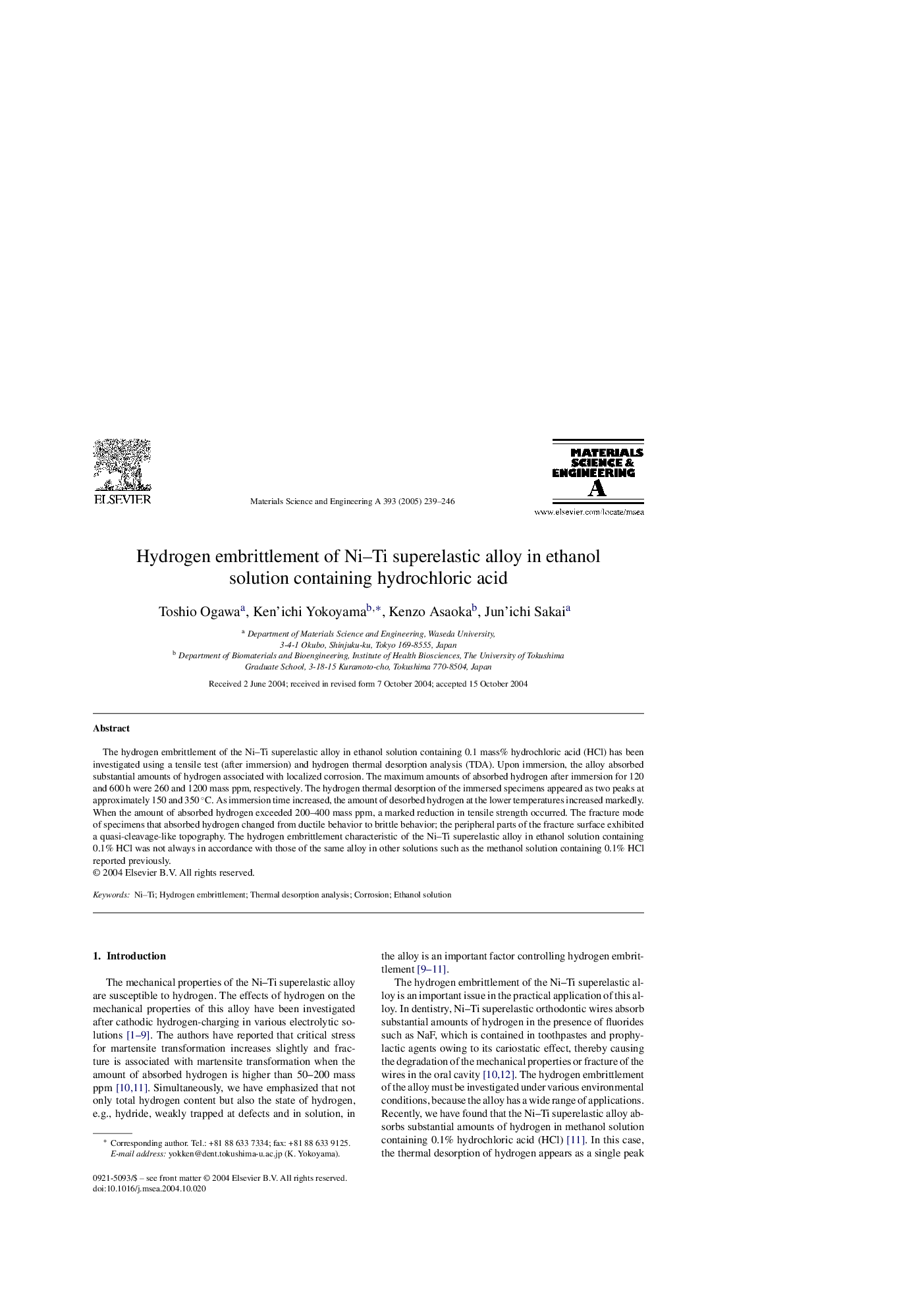| Article ID | Journal | Published Year | Pages | File Type |
|---|---|---|---|---|
| 9796506 | Materials Science and Engineering: A | 2005 | 8 Pages |
Abstract
The hydrogen embrittlement of the Ni-Ti superelastic alloy in ethanol solution containing 0.1 mass% hydrochloric acid (HCl) has been investigated using a tensile test (after immersion) and hydrogen thermal desorption analysis (TDA). Upon immersion, the alloy absorbed substantial amounts of hydrogen associated with localized corrosion. The maximum amounts of absorbed hydrogen after immersion for 120 and 600 h were 260 and 1200 mass ppm, respectively. The hydrogen thermal desorption of the immersed specimens appeared as two peaks at approximately 150 and 350 °C. As immersion time increased, the amount of desorbed hydrogen at the lower temperatures increased markedly. When the amount of absorbed hydrogen exceeded 200-400 mass ppm, a marked reduction in tensile strength occurred. The fracture mode of specimens that absorbed hydrogen changed from ductile behavior to brittle behavior; the peripheral parts of the fracture surface exhibited a quasi-cleavage-like topography. The hydrogen embrittlement characteristic of the Ni-Ti superelastic alloy in ethanol solution containing 0.1% HCl was not always in accordance with those of the same alloy in other solutions such as the methanol solution containing 0.1% HCl reported previously.
Related Topics
Physical Sciences and Engineering
Materials Science
Materials Science (General)
Authors
Toshio Ogawa, Ken'ichi Yokoyama, Kenzo Asaoka, Jun'ichi Sakai,
